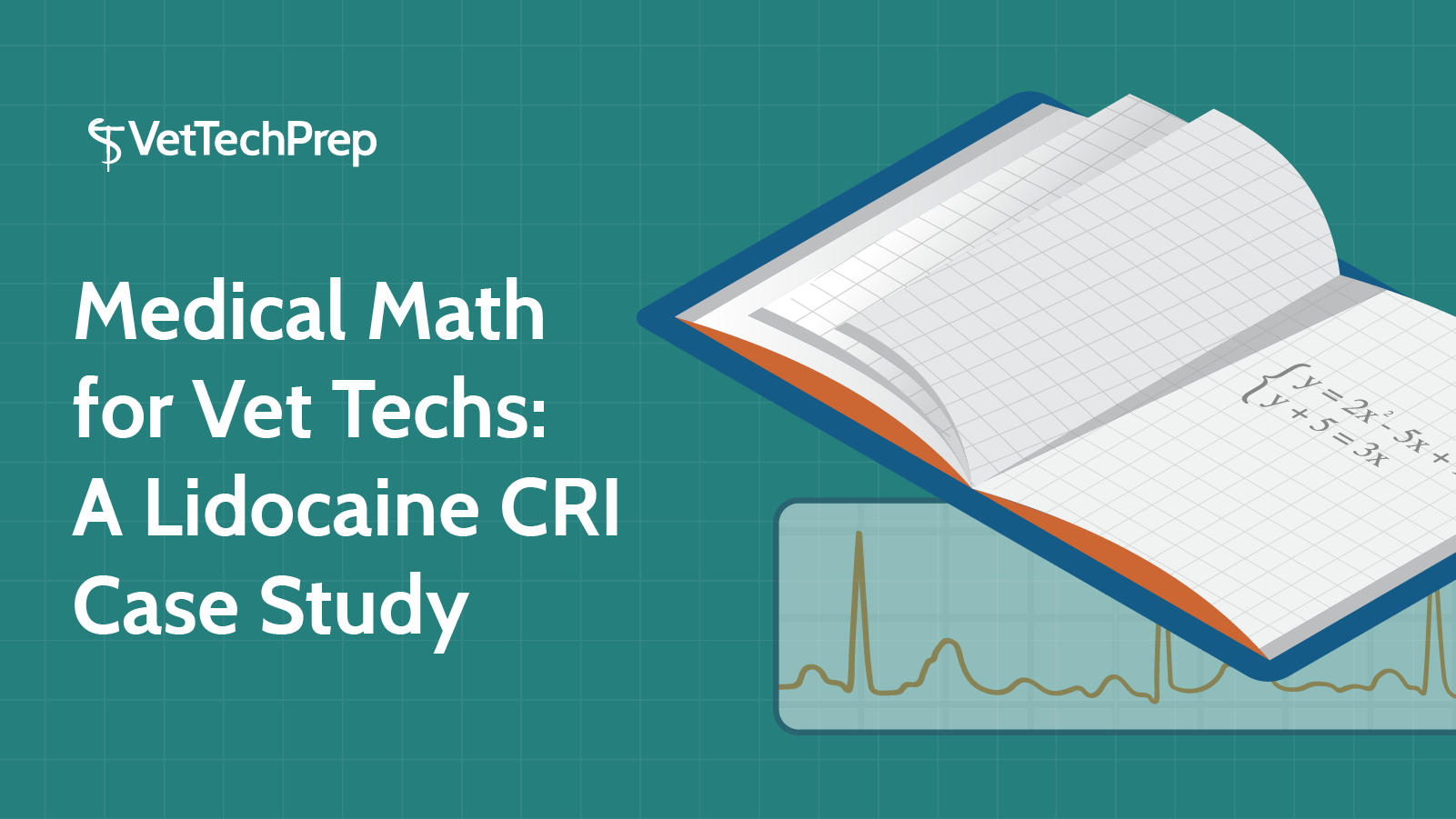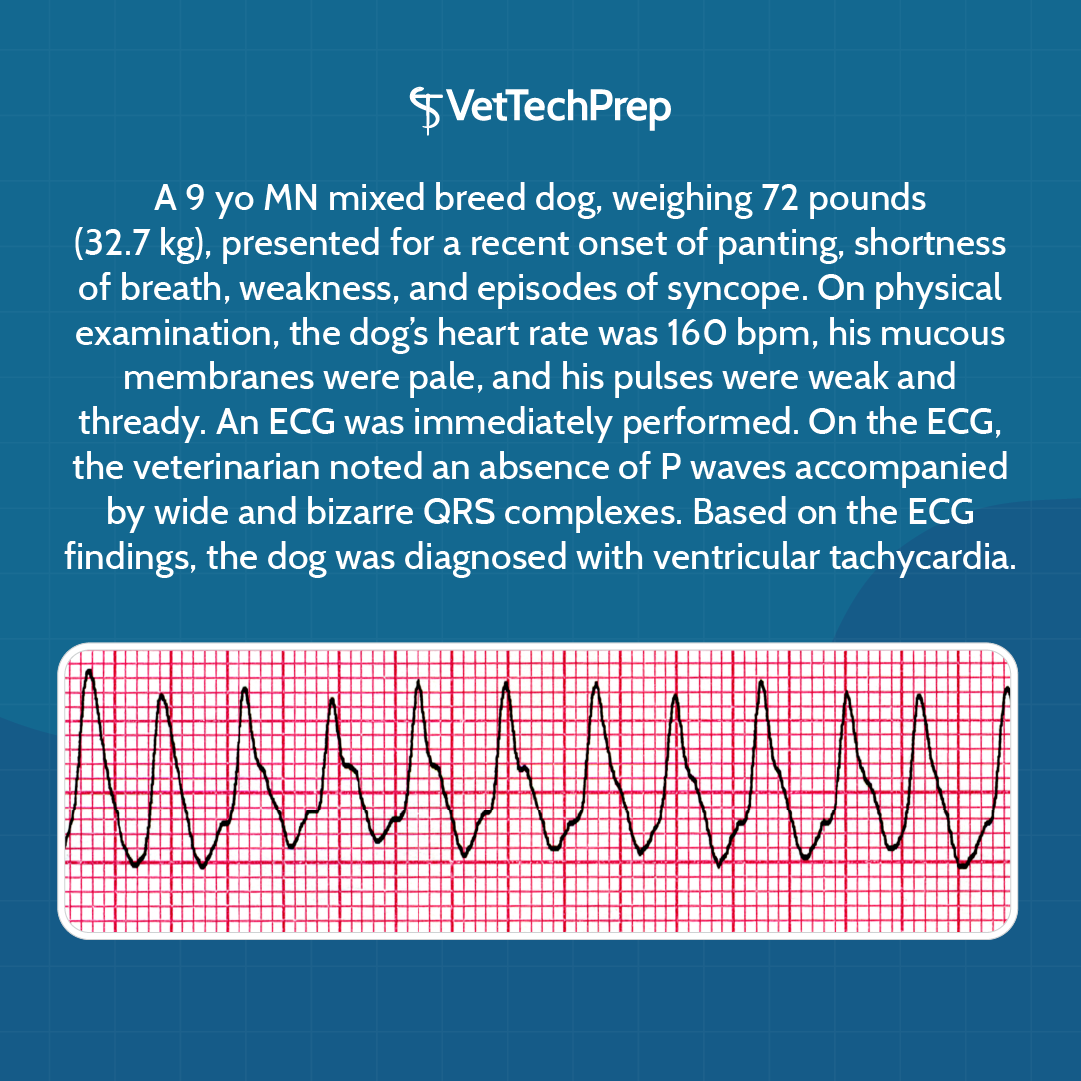
A 9 yo MN mixed breed dog, weighing 72 pounds (32.7 kg), presented for a recent onset of panting, shortness of breath, weakness, and episodes of syncope. On physical examination, the dog’s heart rate was 160 bpm, his mucous membranes were pale, and his pulses were weak and thready. An ECG was immediately performed. On the ECG, the veterinarian noted an absence of P waves accompanied by wide and bizarre QRS complexes. Based on the ECG findings, the dog was diagnosed with ventricular tachycardia.

The vet attempted to treat the ventricular tachycardia with boluses of IV lidocaine. While the patient responded to these boluses, the response was short-lived and the ventricular tachycardia rapidly recurred. After four boluses, the vet decided to start the dog on a lidocaine constant rate infusion (CRI).
How much lidocaine will you need to add to a 1 L bag of LRS in order to deliver a lidocaine CRI at a dose of 60 ug/kg/min? Your practice has 20 mg/ml lidocaine in stock, and your vet would like the CRI to run at a maintenance rate of 60 ml/kg/day.
Stepwise Approach to Constant Rate Infusion
Although CRI calculations can be confusing, it helps to break them down into two separate steps. First, you’ll need to figure out the dog’s lidocaine dose, in ml/hr. Then, you can use this information to determine how much lidocaine to add to each bag of fluids.
Step 1: Figure out the dog’s lidocaine dose, in ml/hr.
Start by multiplying your desired lidocaine dose (60 ug/kg/min) by the dog’s weight (in kg), to figure out the dog’s dose in ug/min:
(60 ug/kg/min) x (32.7 kg) = 1,962 ug/min
Next, convert to mg/min, in order to make your calculations easier:
(1,962 ug/min) x (0.001 mg/ug) = 1.92 mg/min
Once you have a dose in mg/min, divide by the drug’s concentration to determine the desired dose in ml/min:
(1.92 mg/min) / (20 mg/ml) = 0.096 ml/min
Finally, convert this ml/min dose into a ml/hr dose:
(0.096 ml/min) x (60 min/hr) = 5.76 ml/hr
Okay, so the dog needs 5.76 ml of lidocaine per hour. This is the first piece of information you need, and getting to this point is usually the hardest part.
If you were going to use a syringe pump, you could actually stop your calculations here. You could draw up a syringe of lidocaine, program 5.76 ml/hr into your syringe pump, and begin the CRI. In this case, however, the vet wants the lidocaine delivered in maintenance fluids (LRS). Therefore, you need to perform some additional calculations.
Step 2: Determine how much lidocaine to add to a 1 L bag of LRS to provide lidocaine at a rate of 5.76 ml/hr in maintenance fluids.
Your first goal here is to figure out how long a bag of fluids will last the patient. Begin by converting the vet’s desired maintenance rate from mg/kg/day to ml/hr, using the dog’s weight:
(60 ml/kg/day) x (32.7 kg) = 1,962 ml/day
(1,962 ml/day) / (24 hr/day) = 81.75 ml/hr
If the fluids must run at 81.75 ml/hr, you can determine how long a single 1 L bag of fluids will last the dog:
(1000 ml) / (81.75 ml/hr) = 12.2 hr
If a 1L bag of fluids will last 12.2 hours, and you want the dog to receive 5.76 mls of lidocaine per hour, how many mls of lidocaine must you add to each bag of fluids?
(12.2 hr) x (5.76 ml/hr) = 70.3 ml
If fluids are given at a maintenance rate of 81.75 ml/hr, adding 70.3 ml of lidocaine to each bag will ensure that the dog receives 60 ug/kg/hr of lidocaine.
Remove 70.3 ml of LRS from the fluid bag. Then, add 70.3 ml of lidocaine (20 mg/ml). Your bag is now ready to be connected to the patient, and fluids delivered at a maintenance rate of 81.75 ml/hr.
Summary
When performing CRI calculations, divide the math into steps.
Begin by converting the patient’s dose from ug/kg/min to ml/hr, using the patient’s weight and the drug concentration. While this math can be tedious, remembering your end goal (a dose in ml/hr) will help you keep the calculations straight.
If you’re going to add the drug to a bag of fluids, you must first determine how many hours the fluid bag will last the patient. Once you know how long a bag will last, and the patient’s drug dose in ml/hr, you can determine how many mls of drug should be added to the fluid bag
Finally, don’t forget to remove fluids before adding medication to the fluid bag, to keep the bag’s volume constant!



